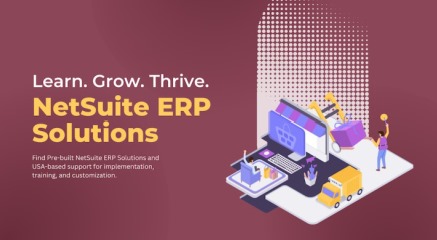How NetSuite ERP Improves Multi-Subsidiary Management
Running multiple legal entities across borders tests any finance and operations team. You juggle different currencies, tax rules, local regulations, time zones, and business practices. You need a system that holds all data in one place yet lets each unit move with local agility. NetSuite ERP does exactly that. It provides a single version of truth. It empowers leaders to get clear answers on cash flow, performance, and risk—fast.
In this post we’ll explore common hurdles in multi-entity setups. You’ll see how NetSuite ERP tackles those challenges. You’ll learn key features that simplify consolidation, reporting, and compliance. Finally, we’ll explain why Anchor Group makes your NetSuite implementation smoother and more effective.
Challenges in Multi-Subsidiary Operations
Companies with several subsidiaries face hurdles that slow growth and dent profits.
-
Data silos across systems lead to errors.
-
Manual consolidation drains time and focus.
-
Currency shifts make forecasting hard.
-
Local tax compliance demands constant updates.
-
Divergent processes create confusion.
-
Limited visibility hinders quick action.
Imagine finance close taking weeks. Leaders find themselves buried in spreadsheets while true insights hide inside messy data. You need a way to speed close cycles, reduce risk, and give teams consistent tools.
How NetSuite ERP Helps You Manage Multiple Entities?
Unified Data Architecture
NetSuite ERP stores all financial and operational data in one cloud platform. When you generate an invoice anywhere, it updates the same general ledger. You avoid duplicate work. You eliminate version mismatches. With real-time data, your team can focus on value-add tasks instead of chasing numbers.
Key benefits:
-
Single ledger across all entities
-
Shared customer and supplier records
-
Role-based access for local teams
Automated Consolidation
Merging results from various subsidiaries often takes days if not weeks. NetSuite ERP performs multi-currency consolidation in seconds. You define intercompany rules and it handles elimination entries automatically. You close books faster. You free up staff to do analysis instead of data entry.
Features include:
-
Automatic currency translation
-
Elimination of intercompany transactions
-
Drill-down from consolidated reports to original records
Standardized Processes
You don’t want each entity reinventing the wheel. NetSuite ERP uses templates for order-to-cash, procure-to-pay, and financial close. You roll out best practices across your network. Local teams still get the flexibility to meet unique rules without diverging from core processes.
Process controls you can apply:
-
Approval workflows for purchase orders and expenses
-
Role-based permissions for data entry and posting
-
Audit trails for changes at every step
Real-Time Visibility
Dashboards give executives instant insights into performance at the parent and subsidiary levels. You spot cash shortfalls or sales spikes before they become issues. Finance leaders get alerts when budgets exceed targets. Operations managers track inventory across locations on one screen.
Sample metrics to track:
-
Cash position by legal entity
-
Days sales outstanding per region
-
Inventory turnover by warehouse
Local Compliance and Tax Support
NetSuite ERP supports global tax engines and local filing formats. You configure tax codes once. The system applies correct rates, generates compliant invoices, and prepares returns in local formats. You reduce audit risk. You keep local teams happy.
Compliance tools include:
-
Localization bundles for VAT, GST, and other indirect taxes
-
Withholding tax calculations
-
Electronic reporting for government agencies
Scalability for Growth
When you add a new subsidiary, NetSuite ERP makes onboarding fast. You copy settings from existing entities. You map new chart of accounts to parent structure. You train local staff on a familiar interface. You avoid long IT projects and high consultancy costs.
Benefits of scale:
-
Rapid deployment in new markets
-
Consistent controls across all units
-
Central IT management with minimal local footprint
Key Features That Drive Efficiency
Flexible Chart of Accounts
You maintain global account standards while letting each unit hold local sub-accounts. You get clean consolidation without forcing one-size-fits-all coding.
Intercompany Hub
Streamline intercompany order management and settlement. The system matches transactions between entities. It creates automatic invoices and journal entries to keep ledgers balanced.
Revenue Recognition
Handle complex deals with milestones, subscriptions, or usage-based pricing. NetSuite automates recognition rules at the item or contract level. You comply with ASC 606 or IFRS 15 without heavy spreadsheet work.
Project and Resource Management
For service-based subsidiaries, you track project budgets, costs, and billing in one tool. Timesheets flow into billing and revenue schedules. You get real project profit metrics.
Inventory and Supply Chain Control
Connect multiple warehouse locations under a single planning engine. You balance safety stock, reorder points, and lead times. You reduce stockouts and excess inventory across your network.
Implementation Steps for Smooth Rollout
-
Define Objectives
-
Clarify what you need from each subsidiary
-
Identify key reports and dashboards
-
Set success metrics for close cycle time, error rates, and user adoption
-
Map Processes
-
Document current workflows at head office and local levels
-
Harmonize where possible; note must-have local steps
-
Configure System
-
Build global structure: chart of accounts, roles, intercompany rules
-
Add localization bundles for each country
-
Set up dashboards and reports
-
Migrate Data
-
Cleanse legacy records before import
-
Use templates for quick load of customers, vendors, and items
-
Validate balances entity by entity
-
Train and Test
-
Conduct role-based training for finance, operations, and users
-
Run mock month-end close in sandbox
-
Adjust workflows based on user feedback
-
Go Live and Optimize
-
Launch in waves by region or entity
-
Monitor key reports for data accuracy
-
Gather user feedback and refine processes
Why Choose Anchor Group for NetSuite Implementation?
Anchor Group brings deep ERP know-how and a warm, human touch. We guide you from planning to steady state. Here’s what sets us apart:
-
Proven multi-entity projects. We’ve onboarded clients with 5 to 50 subsidiaries.
-
Local and global experts. We cover North America, Europe, and Asia Pacific.
-
Flexible engagement. You pick fixed-scope or managed services by the hour.
-
Change management focus. We ensure high user adoption with on-site coaching.
-
First-time-right approach. We emphasize data quality and process alignment from day one.
-
Post-launch support. Our team stays on call to resolve issues and tune reports.
Partnering with Anchor Group means faster time to value. You reduce project risk. You build a platform that grows with you.
Conclusion
Managing multiple subsidiaries no longer needs manual workarounds. NetSuite ERP brings data, processes, and compliance together on one cloud platform. It lets you close books faster, meet local rules, and gain strategic insights. Anchor Group delivers the people, tools, and process know-how to make your rollout a success. Ready to streamline your multi-entity operations and free your team to focus on growth? Contact Anchor Group today and get your path to unified, real-time management.







